Frontier
Everyday Life
Frontier homes were where settlers slept, ate, played, worked, gave birth, and died.
While their homes were simple, everyday life was not. Food had to be grown or hunted. Clothes were made from flax, cotton, or wool that had to be spun, dyed, and woven. Soap was made from ashes and fats. Candles were formed from tallow or beeswax. Eating utensils, furniture, and even the roof over their heads were all made by the pioneers.
These large families were usually crowded together in the same room. If they had a loft, the parents slept downstairs with a baby or young child while the children slept in the loft, with several children in the same bed. They were usually up before dawn, and went to bed shortly after dark.
Everything had to be done by hand—chopping trees, hauling wood, digging out rocks, hoeing weeds, picking cotton, harvesting vegetables, mowing hay, husking corn, milking cows, hauling water, churning butter, and preparing foods.
Women did chores in the house, kitchen, farmyard, and garden. Men worked in the farmyards, fields, barns, pastures and woodlands. Children more than three years old were expected to help with chores.
Hygiene
Most people in these times considered washing their face and hands as sufficient daily hygiene. They changed their clothes once a week, but probably only cleaned their entire body once or twice a year. Bathing involved standing in a tub of water and sponging off with a rag.
Frontier Tennesseans did know that food caused tooth decay. They attempted to clean their teeth using twigs or roots. The most popular were twigs from sweet gum trees or sassafras root. Even so, many people had problems with tooth decay.
Ideas about hygiene were beginning to change. By 1821, books were recommending cleanliness as “becoming in…society, but absolutely necessary for…good health.”
Tennesseans lived in a world that was full of dirt, insects, and really strong smells. With no deodorant and little bathing, most people’s clothing, especially in the summer, was stiff with dirt and sweat.
Houses were full of flies, and bedding sometimes had fleas and bed bugs. Chamber pots were used at night for toilets, and then the contents were thrown outside in the morning. Some farms had an outdoor privy; other families just went outside to an available piece of the woods.
Life was difficult, and medical knowledge and care were very primitive. People regularly became ill and died.
Early deaths meant that many widows and widowers had to find places in the households of their children or married brothers and sisters. In some cases, widows moved back home with their parents. Life on the frontier was hard enough for a family. Not many people attempted to live all alone.
Picture Credits:
- Drawing of a home on the frontier. It shows a woman standing outside of a log cabin in the woods. One man is also shown chopping wood, while another carries a bucket and a rifle. This drawing was made by Bernie Andrews and originally published in The Overmountain Men by Pat Alderman. Tennessee Museum Collection
- Photograph of people talking with neighbors. This photo was taken at the Museum of Appalachia in Clinton, Tennessee. It shows two re-enactors sitting on a porch and conversing. A man is shown holding a rifle, while a woman is shown peeling apples. Museum of Appalachia
- Drawing entitled, “Camp meeting of the Methodists in N. America.” This drawing was made in 1819 by M. Dubourg. Library of Congress
- Photograph showing the inside of a fort. This photo was taken at Mansker’s Station in Goodlettsville, Tennessee. It shows a wall surrounding the fort and two small cabins. A hide can also be seen drying on the outside of the wall of the cabin on the left. Courtesy of Historic Mansker’s Station
- Drawing of a man being whipped. This drawing was created by Edwin Tunis and published in his 1961 book Frontier Living. It shows a man tied to the trunk of a tree while one man beats him with a stick and another man watches. Tennessee State Museum Collection
- Photograph showing a group of men re-enactors gathered around a fire. This photo was taken in 2007 in Elizabethton, Tennessee. Friends of Sycamore Shoals State Historic Area
Frontier >> Living on the Frontier >> Everyday Life >>
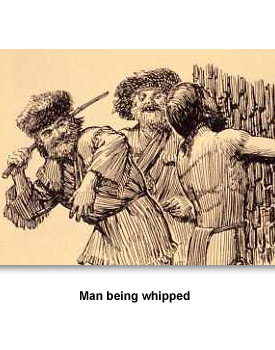
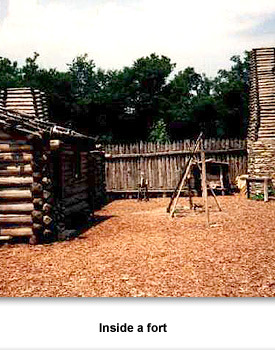
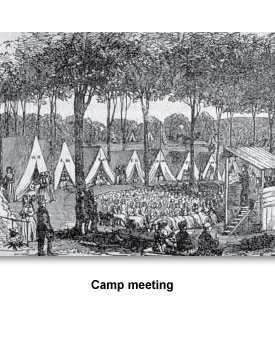
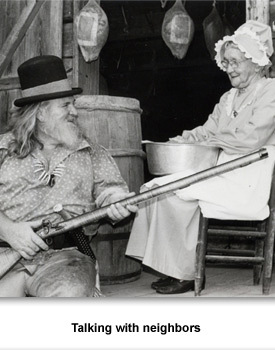
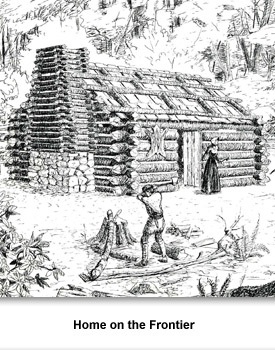
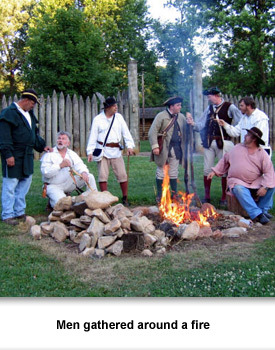
 Sponsored by: National Endowment for the Humanities
Sponsored by: National Endowment for the Humanities